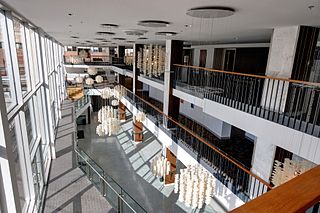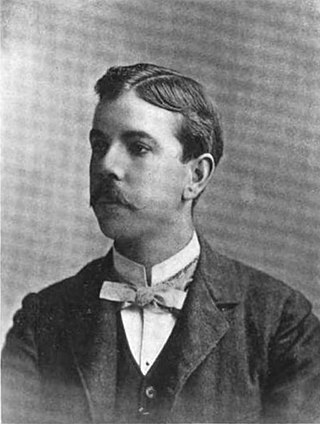
An architect is a person who plans, designs, and oversees the construction of buildings. To practice architecture means to provide services in connection with the design of buildings and the space within the site surrounding the buildings that have human occupancy or use as their principal purpose. Etymologically, the term architect derives from the Latin architectus, which derives from the Greek, i.e., chief builder.

Moshe Safdie is an architect, urban planner, educator, theorist, and author. He is known for incorporating principles of socially responsible design throughout his six-decade career. His projects include cultural, educational, and civic institutions; neighborhoods and public parks; housing; mixed-use urban centers; airports; and master plans for existing communities and entirely new cities in the Americas, the Middle East, and Asia. Safdie is most identified with designing Marina Bay Sands and Jewel Changi Airport, as well as his debut project Habitat 67, which was originally conceived as his thesis at McGill University. He holds legal citizenship in Israel, Canada, and the United States.
Arthur Charles Erickson was a Canadian architect and urban planner. He studied at the University of British Columbia and, in 1950, received his B.Arch. (Honours) from McGill University. He is known as Canada's most influential architect and was the only Canadian architect to win the American Institute of Architects AIA Gold Medal. When told of Erickson's award, Philip Johnson said, "Arthur Erickson is by far the greatest architect in Canada, and he may be the greatest on this continent."

The American Institute of Architects (AIA) is a professional organization for architects in the United States. It is headquartered in Washington, D.C. AIA offers education, government advocacy, community redevelopment, and public outreach programs, and collaborates with other stakeholders in the design and construction industries.

Douglas Joseph Cardinal is a Canadian architect based in Ottawa, Ontario. His flowing architecture marked with smooth curvilinear forms is influenced by his Indigenous heritage as well as European Expressionist architecture. His passion for unconventional forms and appreciation of nature and landscape were present in his life from a very young age, and consequently developed into the unique architectural style he has employed throughout his career. Cardinal is perhaps best known for his designs of the Canadian Museum of History in Gatineau, Quebec (1989) and the National Museum of the American Indian in Washington, D.C. (1998). He is considered one of Canada's most influential contemporary architects.

Bonsecours Market is a two-story domed public market located in Montreal, Quebec, Canada at 350 Rue Saint-Paul in Old Montreal. For more than 100 years, it was the main public market in the Montreal area. It also briefly accommodated the Parliament of United Canada for one session in 1849.
John Hamilton Andrews LFRAIA HonFAIA FRAIC RIBA was an Australian architect, known for designing a number of acclaimed structures in Australia, Canada and the United States. He was Australia's first internationally recognised architect, and the 1980 RAIA Gold Medalist. He died peacefully in his hometown of Orange on 24 March 2022.
Gazell Macy DuBois M. Arch, P. Eng, PP-FRAIC, PP-RCA, FAIA (hon) was an American-born Canadian architect who designed several landmark Toronto buildings.

Samuel Óghalé Oboh is a Canadian architect, manager, leader, former Vice President - Architecture at AECOM Canada Architects Ltd - a Fortune 500 Company and the 2015 President of the Royal Architectural Institute of Canada (RAIC). Sam Oboh is the first Canadian of African descent to be elected as president of this Canadian Royal Institute - a feat that the erstwhile director of the Institute of African Studies at Carleton University - Ottawa, the late professor Pius Adesanmi described as "a history-making event on many fronts." In 2021, at the Rio General Assembly, Oboh was elected as the Vice President for Region 3 of the Paris-based International Union of Architects (UIA) - a body recognized by the United Nations, working to unify architects, influence public policies, and advance architecture to serve the needs of society. Oboh was elevated to the College of Fellows of the American Institute of Architects at an investiture ceremony held in New York on June 22, 2018. The citation read at the investiture ceremony noted that "Oboh exemplifies the ideals of stewardship excellence by intensifying public advocacy - inspiring diversity, promoting good design and championing transformative initiatives for public good." With his investiture, Oboh qualified to use the FAIA designation. Only about 3% of architects in the United States of America have this unique distinction.
Siamak Hariri, OAA, AAA, AIBC, FRAIC, RCA, Intl. Assoc. AIA is a Canadian architect and a founding partner of Hariri Pontarini Architects, a full-service architectural and interior design practice based in Toronto, Canada.

Raymond Tait (Ray) Affleck was a Canadian architect. He was born on 20 November 1922 in Penticton, British Columbia. He died in Montreal on 16 March 1989. One of the founders of Montreal-based architectural firm Arcop, he also taught at leading universities in Canada and the United States.
Hariri Pontarini Architects is a Toronto-based architectural practice founded by Siamak Hariri and David Pontarini.
The Federation of Canadian Artists (FCA) is an association of artists in Canada founded in Toronto in 1941. The FCA soon had chapters across the country, and was one of the main forces behind formation of the Canada Council in 1957. After this, the national organization withered, and only the British Columbia chapter remained active. A drive for expansion began in 1977, causing a renewal of activity that started in western Canada and then spread. Expansion stalled out in the late 1990s when funding cuts hit the Federation as hard as it hit other arts organization. Renewed vigor by volunteers and staff in recent years has brought new life to the Federation and expansion is again underway. The organization has about 2,700 paying members and 5,000 artist contacts throughout Canada as of the end of 2017, a permanent gallery in Vancouver, and organizes approximately 44 exhibitions every year.
Marianne McKenna, OC, FRAIC, OAA, OAQ, AIA, RIBA is a Canadian architect and a founding partner of KPMB Architects, a Toronto-based practice established in 1987. She is an invested Officer of The Order of Canada "for her contributions as an architect, designing structures that enrich the public realm". Her projects include the renovation and expansion of The Royal Conservatory TELUS Centre for Performance and Learning and Koerner Hall. McKenna and KPMB were selected by The Brearley School, an independent all-girls school located in New York City, to lead the renovation of its building located on the Upper East Side. Her current projects also include for Banff Centre for Arts and Creativity in Banff, Alberta and an expansion and renovation of historic Massey Hall in Toronto In 2010 she was named one of Canada’s Top 100 Most Powerful Women and in 2014 she was named one of Toronto’s top 50 Powerful People by MacLean’s Magazine.
Barbara A. Humphreys is a Canadian architect and author, specializing in public service, historic preservation, and housing.
Eva Hollo Vecsei is a Hungarian-Canadian architect. She began her career in Budapest and emigrated to Montreal in 1957, where she established Vecsei Architects with her husband in 1984.
Gavin Affleck, FRAIC, is a Canadian architect known for the design of cultural institutions and public spaces. He is the founding partner of the Montreal firm Affleck de la Riva alongside Richard de la Riva, and is the son of architect and Arcop founder Ray Affleck. Affleck is an elected Fellow of the Royal Architectural Institute of Canada (FRAIC), a member of the Quebec Order of Architects (OAQ) and the Ontario Association of Architects (OOA), as well as a LEED-certified architect.
David Paul Penner was a Canadian architect from Osborne Village in Winnipeg, Manitoba. He attended the University of Manitoba where he received his Bachelor of Environment Studies in 1979 and Masters of Architecture in 1985. Penner was the founding principal of David Penner Architect (DPA). He became a Fellow of the RAIC in 2012, and was involved in several organizations outside his firm including Storefront Manitoba and the Prairie Design Awards Program. His best-known architectural works include Fountain Springs Housing, Buhler Center, Windsor Park Library, and Mere Hotel. Penner died from a heart attack on January 7, 2020.
The Van Ginkel Footbridge is a heritage-designated cantilever pedestrian bridge, located in Bowring Park, St. John's, Newfoundland and Labrador. Architects Sandy Van Ginkel and Blanche Lemco van Ginkel, recognized for combining urban planning with architectural skills, were commissioned in 1958 to design the footbridge.

Allan Merrick Jeffers (1875–1926) was an American architect who practiced largely in Alberta, Canada.








